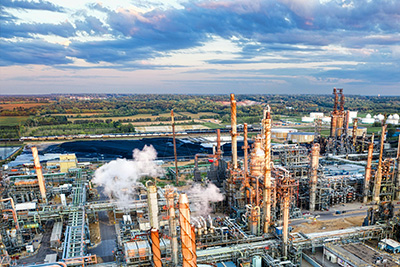-
![Catalyst Technolog···]() 2024-12-03 Catalyst Technologies for High-Yield···
2024-12-03 Catalyst Technologies for High-Yield···Catalyst technologies play a crucial role in facilitating high-yield reverse esterification reactions, which are essential in the synthesis of various chemicals and pharmaceuticals. These processes often require efficient catalysts to achieve optimal conversion rates and product selectivity. Recent advancements in catalyst design have led to the development of novel materials and enzymes that significantly enhance reaction efficiency. Key areas of focus include the selection of appropriate catalysts, optimization of reaction conditions, and the integration of sustainable practices. This research aims to improve the overall process economy and environmental footprint of reverse ester reactions, thereby contributing to more sustainable chemical manufacturing.
read more > -
![Efficient Recyclin···]() 2024-12-03 Efficient Recycling of Reverse Ester···
2024-12-03 Efficient Recycling of Reverse Ester···The article discusses the development of an efficient method for recycling reverse ester tin catalysts, which are widely used in various industrial processes. This new approach aims to reduce waste and lower production costs by reusing these expensive catalysts. The process involves a series of purification steps that restore the catalytic activity of spent catalysts, making them suitable for reuse. The research highlights significant improvements in recovery efficiency and demonstrates the potential for sustainable practices in the chemical industry.
read more > -
![Integrating Tin Ca···]() 2024-12-03 Integrating Tin Catalysts in Green C···
2024-12-03 Integrating Tin Catalysts in Green C···The integration of tin catalysts in green chemistry for esterification reactions has gained significant attention due to their efficiency and environmental benefits. Tin-based catalysts, such as dibutyltin oxide (DBTO) and tin(II) chloride (SnCl2), have been shown to effectively promote the esterification process with high yields and selectivity. These catalysts are particularly advantageous because they can operate under mild conditions, require minimal energy input, and are recyclable. Moreover, they minimize the use of hazardous solvents and reduce waste generation, aligning well with sustainable chemical practices. This approach not only enhances the eco-friendliness of esterification but also opens new avenues for developing greener industrial processes.
read more > -
![Supply Chain Manag···]() 2024-12-03 Supply Chain Management of Tin Ore f···
2024-12-03 Supply Chain Management of Tin Ore f···The management of tin ore in the supply chain for reverse ester production involves several critical steps. Key factors include securing a stable supply of high-quality tin ore, optimizing transportation and logistics to minimize costs and delays, and ensuring compliance with environmental regulations. Effective supply chain strategies require collaboration between miners, processors, and producers to enhance efficiency and sustainability. Additionally, maintaining strong relationships with suppliers and investing in technology for better demand forecasting can significantly improve the overall process.
read more > -
![The Role of Revers···]() 2024-12-03 The Role of Reverse Ester Tin in Hig···
2024-12-03 The Role of Reverse Ester Tin in Hig···Reverse ester tin plays a crucial role in enhancing the performance of polymer additives. These additives, when incorporated into polymers, improve properties such as thermal stability, transparency, and processability. Reverse ester tin acts as an efficient catalyst and heat stabilizer, particularly in PVC applications. Its unique characteristics enable it to effectively prevent degradation during processing and use, ensuring longer product lifespan and better quality. Thus, reverse ester tin is indispensable in developing high-performance polymers for various industries.
read more > -
![Advanced Reactor D···]() 2024-12-02 Advanced Reactor Designs for Reverse···
2024-12-02 Advanced Reactor Designs for Reverse···Advanced reactor designs for reverse ester tin processing offer significant improvements in efficiency and product yield. These innovations focus on optimizing heat and mass transfer, enhancing catalyst performance, and reducing byproduct formation. Key features include modular construction, improved mixing mechanisms, and integrated process control systems. By employing these advanced reactors, the process can achieve higher conversions, lower energy consumption, and reduced environmental impact compared to traditional methods. This advancement paves the way for more sustainable and economically viable production of ester tin compounds.
read more > -
![Tin-Based Catalyst···]() 2024-12-02 Tin-Based Catalysts: Essential Prope···
2024-12-02 Tin-Based Catalysts: Essential Prope···Tin-based catalysts play a crucial role in reverse esterification reactions, offering significant advantages in terms of efficiency and selectivity. These catalysts exhibit essential properties such as high reactivity, stability under various reaction conditions, and the ability to promote specific pathways that enhance product yields. Tin compounds, including tin(II) salts and tin(IV) oxides, have been extensively studied for their catalytic performance in synthesizing esters from carboxylic acids and alcohols. The unique electronic configuration of tin atoms facilitates the formation of intermediates that are key to the esterification process. Additionally, the ease with which tin-based catalysts can be recovered and reused makes them environmentally friendly and economically viable options for industrial applications.
read more > -
![Reverse Ester Tin ···]() 2024-12-02 Reverse Ester Tin Catalysts: Effect ···
2024-12-02 Reverse Ester Tin Catalysts: Effect ···The article explores the impact of reverse ester tin catalysts on reaction rates and product quality in chemical synthesis processes. These catalysts, known for their unique properties, significantly enhance the efficiency and selectivity of reactions. The study demonstrates that the use of reverse ester tin catalysts leads to faster reaction times and improved product quality compared to conventional catalysts. This advancement could potentially revolutionize various industrial applications by offering a more effective and environmentally friendly alternative.
read more > -
![Economic Analysis ···]() 2024-12-02 Economic Analysis of Reverse Ester T···
2024-12-02 Economic Analysis of Reverse Ester T···This study conducts an economic analysis of reverse ester tin supply chains, focusing on cost structures, market dynamics, and sustainability factors. It examines the efficiency of recycling processes and their impact on reducing production costs compared to traditional methods. The analysis reveals that reverse supply chains can significantly lower environmental impacts while maintaining competitive economic benefits. Key findings indicate potential cost savings and environmental advantages through optimized recycling techniques and enhanced supply chain management.
read more >








